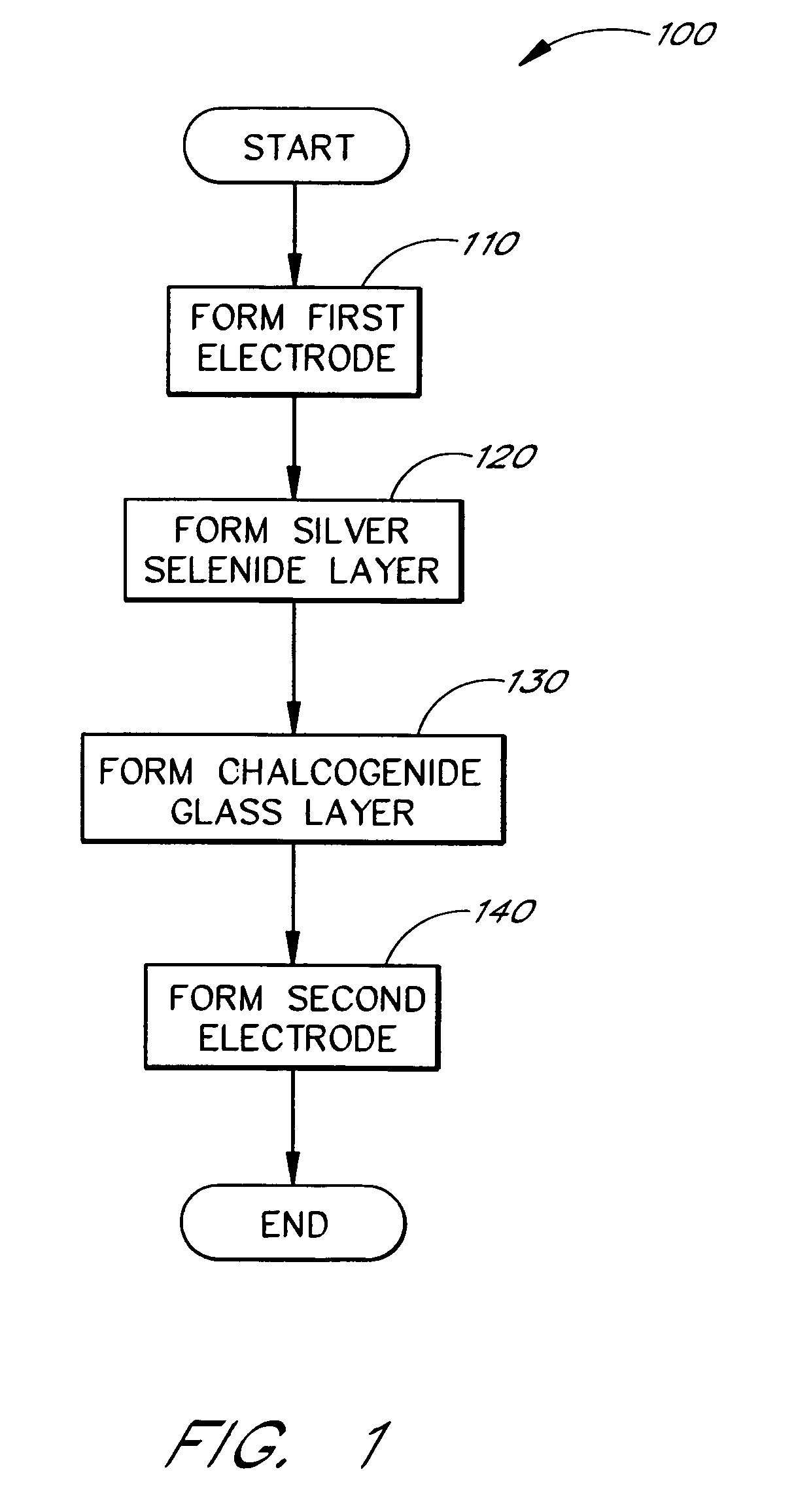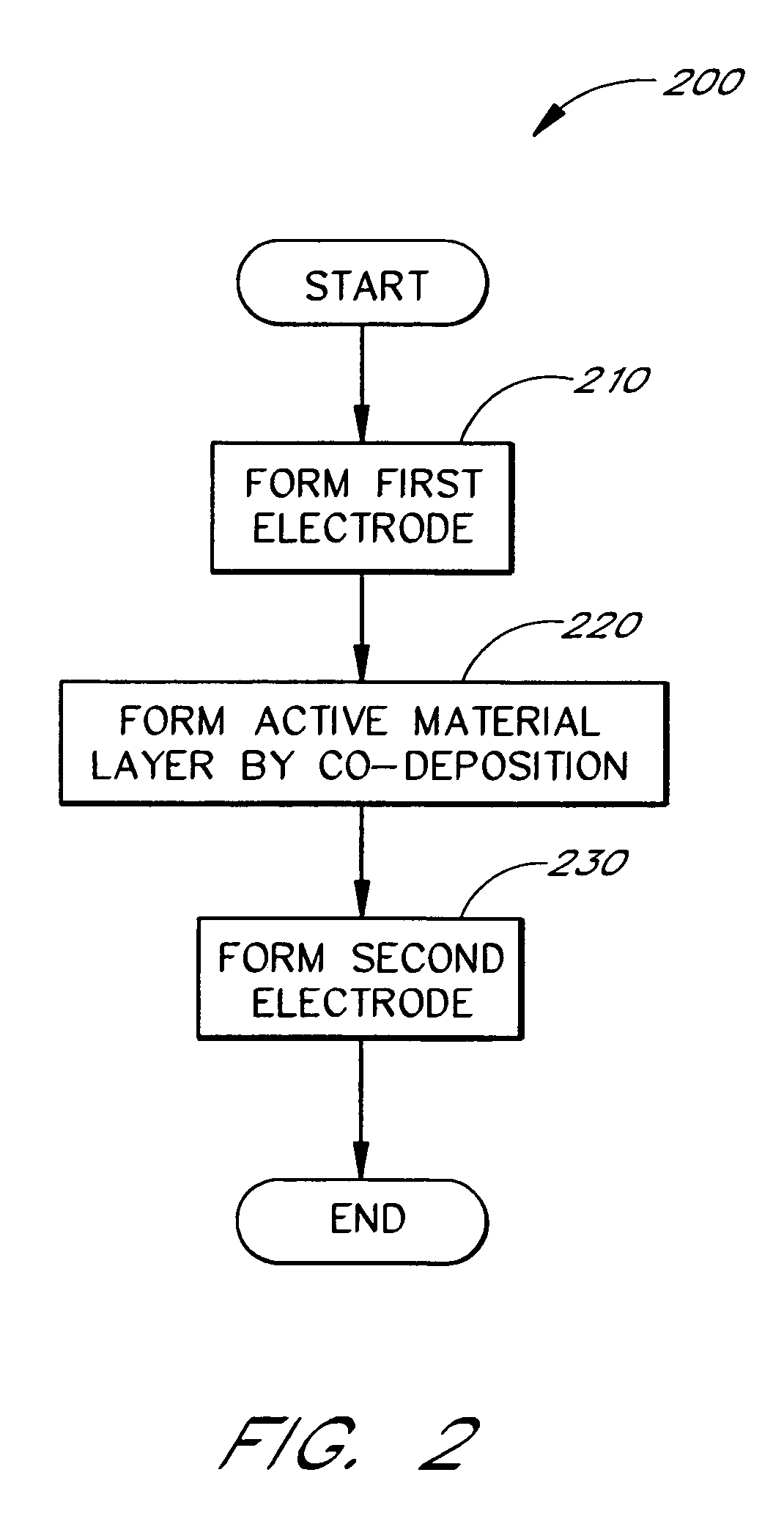Method and apparatus for resistance variable material cells
a variable material and resistance technology, applied in the field of memory technology, can solve the problems of data loss, volatile memory loss, etc., and achieve the effects of improving switching speed, high yield, and high ra
- Summary
- Abstract
- Description
- Claims
- Application Information
AI Technical Summary
Benefits of technology
Problems solved by technology
Method used
Image
Examples
Embodiment Construction
[0028]Although this invention will be described in terms of certain preferred embodiments, other embodiments that are apparent to those of ordinary skill in the art, including embodiments which do not provide all of the benefits and features set forth herein, are also within the scope of this invention. Accordingly, the scope of the invention is defined only by reference to the appended claims.
[0029]While illustrated in the context of silver selenide and germanium selenide, the skilled artisan will appreciate that the principles and advantages described herein are applicable to other types of silver chalcogenides and chalcogenide glasses. For example, other silver chalcogenides include silver sulfide, silver telluride, and silver oxide. Another chalcogenide glass includes arsenic selenide (AsxSey).
[0030]Applicant has discovered that regions of silver selenide within germanium selenide (GexSe(1−x)) are the source of the memory switching characteristic of silver (Ag) ultraviolet (UV) ...
PUM
 Login to View More
Login to View More Abstract
Description
Claims
Application Information
 Login to View More
Login to View More - R&D
- Intellectual Property
- Life Sciences
- Materials
- Tech Scout
- Unparalleled Data Quality
- Higher Quality Content
- 60% Fewer Hallucinations
Browse by: Latest US Patents, China's latest patents, Technical Efficacy Thesaurus, Application Domain, Technology Topic, Popular Technical Reports.
© 2025 PatSnap. All rights reserved.Legal|Privacy policy|Modern Slavery Act Transparency Statement|Sitemap|About US| Contact US: help@patsnap.com



